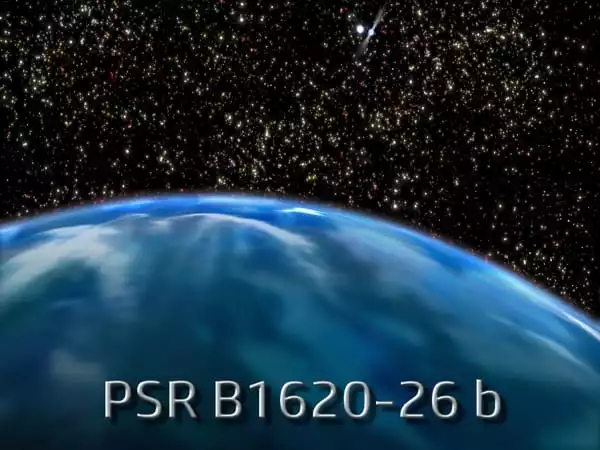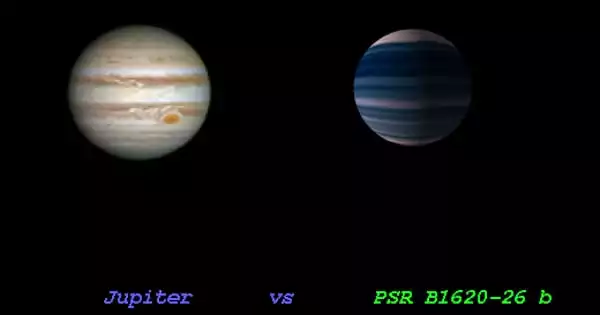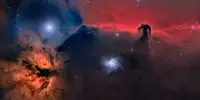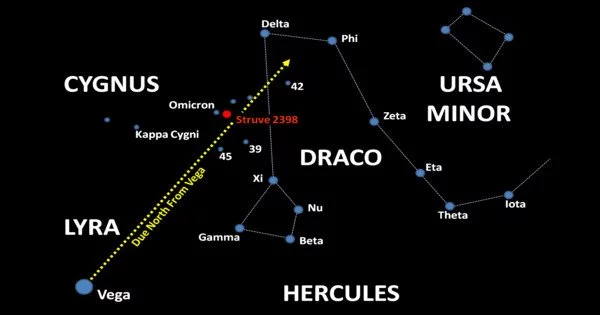PSR B1620-26 b is an exoplanet in the constellation Scorpius located approximately 12,400 light-years from Earth. It is nearly three times the age of Earth, which formed 4.5 billion years ago, at 12.7 billion years. Because of its extreme age, this exoplanet, the oldest ever discovered in our Milky Way galaxy, has been dubbed “Methuselah” or the “Genesis planet.”
The planet is the first to be confirmed to be in a circumbinary orbit around the two stars of PSR B1620-26 (a pulsar (PSR B1620-26 A) and a white dwarf (WD B1620-26). It is also the first planet to be discovered in a globular cluster. The planet is one of the oldest known extrasolar planets, dating back approximately 12.7 billion years.
Mass, orbit, and age
PSR B1620-26 b has a mass 2.627 times that of Jupiter and orbits at a distance of 23 AU (3.4 billion km), which is slightly greater than Uranus’s distance from the Sun. The planet’s orbit takes about 100 years.
The triple system is located just outside the core of the Messier 4 globular cluster. The cluster’s age has been estimated to be around 12.7 billion years, and because all stars in a cluster form around the same time, and planets form alongside their host stars, PSR B1620-26 b is also likely to be around 12.7 billion years old. This planet is much older than any other known planet, and it is nearly three times the age of Earth. Throughout its existence, it has gone through several stages.

Host stars
PSR B1620-26 b revolves around two stars. PSR B1620-26 is a pulsar, a neutron star spinning at 100 revolutions per second, with a mass of 1.34 M☉, a radius of around 20 kilometers (0.00003 R☉), and a temperature of less than or equal to 300,000 K. The second candidate is a white dwarf with a mass of 0.34 M☉, a radius of around 0.01 R☉, and a temperature of less than or equal to 25,200 K. These stars orbit each other once every six months at a distance of one AU. The system is 12.7 to 13 billion years old, making it one of the oldest binary stars ever discovered. In comparison, the Sun is 4.6 billion years old.
The binary system’s apparent magnitude, or how bright it appears from Earth’s perspective, is 24. It is far too dim to be seen with the naked eye.
Detection and discovery
PSR B1620-26 b, like nearly all extrasolar planets discovered prior to 2008, was discovered through the Doppler shifts its orbit induces on radiation from the star it orbits. In the early 1990s, a group of astronomers led by Donald Backer determined that a third object was required to explain the observed Doppler shifts while studying what they thought was a binary pulsar.
The study of the planetary orbit also allowed the mass of the white dwarf star to be estimated, and theories of the planet’s formation suggested that the white dwarf should be young and hot. A team led by Steinn Sigurdsson announced the discovery of the white dwarf and confirmation of its predicted properties on July 10, 2003, using Hubble Space Telescope observations. The name Methuselah was first mentioned at a NASA press conference, capturing the attention of journalists all over the world.
















